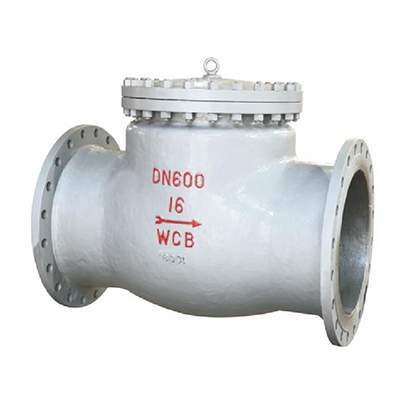Welcome to My Blog!
Before we dive into the content, I’d love for you to join me on my social media platforms where I share more insights, engage with the community, and post updates. Here’s how you can connect with me:
Facebook:https://www.facebook.com/profile.php?id=61563865935136
Now, let’s get started on our journey together. I hope you find the content here insightful, engaging, and valuable.
Introduction

In the world of fluid control systems, ensuring efficient and reliable flow is critical across industries. A stainless check valve plays a pivotal role in maintaining unidirectional flow, preventing backflow, and protecting equipment from potential damage. These valves are widely used in applications ranging from water treatment to chemical processing due to their durability, corrosion resistance, and ability to handle high-pressure environments. This guide explores the various types of stainless check valves, their applications, and key considerations for selecting the right valve for your system.
Stainless steel, known for its strength and resistance to rust and corrosion, makes these valves ideal for harsh environments. Whether you’re managing a plumbing system, an industrial pipeline, or a specialized chemical process, understanding the functionality and benefits of a stainless check valve can help you optimize performance and longevity. This blog will dive into the types, applications, and technical aspects of these essential components, providing a comprehensive resource for engineers, facility managers, and procurement specialists.
What Is a Stainless Check Valve?
A stainless check valve is a mechanical device designed to allow fluid to flow in one direction while preventing reverse flow. It operates automatically, relying on the pressure of the fluid to open or close the valve. The stainless steel construction enhances its ability to withstand corrosive substances, high temperatures, and extreme pressures, making it suitable for demanding applications.
The primary function of a stainless check valve is to protect systems from backflow, which can cause contamination, equipment failure, or inefficient operations. These valves are commonly found in industries such as oil and gas, water treatment, food and beverage processing, and pharmaceuticals, where hygiene and reliability are paramount.
Types of Stainless Check Valves
There are several types of stainless check valves, each designed for specific applications and operational requirements. Below, we explore the most common types and their unique features.
Swing Check Valves
Swing check valves feature a hinged disc that swings open when fluid flows in the correct direction and closes when backflow occurs. These valves are ideal for low-velocity applications and are commonly used in water and wastewater systems. Their simple design ensures minimal pressure drop and reliable performance.
Ball Check Valves
Ball check valves use a spherical ball to control flow. When fluid pressure pushes the ball away from the seat, flow is allowed; when pressure decreases, the ball returns to the seat, preventing backflow. These valves are compact and effective for applications involving viscous fluids or slurries.
Lift Check Valves
Lift check valves have a disc or piston that lifts off the seat when fluid flows forward and reseats to block reverse flow. They are suitable for high-pressure systems, such as steam or gas pipelines, where precise flow control is needed. Their robust design ensures durability in demanding conditions.
Dual Plate Check Valves
Dual plate check valves use two spring-loaded plates to control flow. Their compact size and lightweight design make them suitable for applications where space is limited, such as offshore platforms or HVAC systems. They offer quick response times and reduced water hammer effects.
Stop Check Valves
Stop check valves combine the functionality of a check valve and a globe valve, allowing manual control to stop flow entirely. These are often used in boiler systems or high-pressure applications where both backflow prevention and flow isolation are required.
Key Applications of Stainless Check Valves
Stainless check valves are versatile components used across various industries. Their corrosion resistance and durability make them a preferred choice for environments where reliability is critical. Below are some of the primary applications.
Water and Wastewater Treatment
In water treatment facilities, stainless check valves prevent backflow in pipelines, ensuring clean water remains uncontaminated. They are used in pumping stations, filtration systems, and distribution networks to maintain consistent flow and protect equipment.
Oil and Gas Industry
The oil and gas sector relies on stainless check valves to manage the flow of crude oil, natural gas, and refined products. These valves withstand harsh conditions, including high pressures and corrosive substances, ensuring safe and efficient operations.
Food and Beverage Processing
Hygiene is a top priority in food and beverage production. Stainless check valves, with their non-reactive surfaces, are ideal for preventing contamination in processing lines for dairy, beverages, and other consumables.
Chemical and Pharmaceutical Industries
In chemical and pharmaceutical manufacturing, stainless check valves handle aggressive fluids and maintain sterile conditions. Their ability to resist corrosion from acids, solvents, and other chemicals ensures long-term reliability.
Technical Specifications of Stainless Check Valves
When selecting a stainless check valve, understanding its technical specifications is crucial for ensuring compatibility with your system. The table below outlines key parameters to consider when choosing a valve.
| Parameter | Description |
|---|---|
| Material | Typically 304 or 316 stainless steel for corrosion resistance. |
| Size Range | Available in sizes from 1/4 inch to over 24 inches, depending on application. |
| Pressure Rating | Ranges from 150 to 2500 PSI, suitable for low to high-pressure systems. |
| Temperature Range | Can operate in temperatures from -20°F to 800°F, depending on the design. |
| End Connections | Options include threaded, flanged, or welded connections for easy installation. |
| Flow Capacity | Measured in Cv (flow coefficient), varies by valve type and size. |
| Standards Compliance | Meets industry standards such as API, ASME, and ANSI for quality assurance. |
This table provides a snapshot of the factors to evaluate when selecting a stainless check valve. Always consult with manufacturers or engineers to ensure the valve meets your specific system requirements.
Benefits of Using Stainless Check Valves
Stainless check valves offer several advantages that make them a preferred choice in many industries. Their corrosion resistance extends service life, reducing maintenance costs. Additionally, their robust construction ensures reliable performance under extreme conditions, such as high pressures or temperatures. The non-reactive nature of stainless steel also makes these valves suitable for applications requiring strict hygiene standards, such as food processing or pharmaceuticals.
Another key benefit is their versatility. With various types and configurations available, stainless check valves can be tailored to meet specific operational needs, from low-pressure water systems to high-pressure chemical pipelines. Their automatic operation eliminates the need for manual intervention, improving efficiency and reducing labor costs.
Factors to Consider When Choosing a Stainless Check Valve
Selecting the right stainless check valve involves evaluating several factors to ensure optimal performance. These include:
- Fluid Type: Consider the chemical composition of the fluid to ensure compatibility with stainless steel grades (e.g., 304 vs. 316).
- Pressure and Temperature: Ensure the valve’s pressure and temperature ratings match the system’s operating conditions.
- Flow Rate: Choose a valve with an appropriate Cv rating to handle the required flow without excessive pressure drop.
- Installation Space: Compact designs like dual plate valves are ideal for tight spaces, while swing valves may require more room.
- Maintenance Needs: Opt for designs that simplify maintenance, such as those with accessible internals or replaceable components.
By carefully assessing these factors, you can select a valve that meets both operational and budgetary requirements.
Installation and Maintenance Tips
Proper installation and maintenance are critical for ensuring the longevity and performance of a stainless check valve. During installation, ensure the valve is oriented correctly to allow unidirectional flow. Misalignment can lead to improper sealing or valve failure. Regular inspections are also essential to detect wear, corrosion, or debris buildup, which can impair functionality.
For maintenance, clean the valve periodically to remove any contaminants, especially in applications involving viscous fluids or slurries. Replace worn components, such as seals or discs, as needed to maintain a tight seal. Always follow manufacturer guidelines and industry standards to ensure safe operation.
Common Challenges and Solutions

While stainless check valves are highly reliable, certain challenges may arise during their use. Below are common issues and their solutions:
- Water Hammer: Rapid valve closure can cause pressure surges. Dual plate or spring-loaded check valves can mitigate this issue.
- Leakage: Improper sealing may occur due to debris or wear. Regular cleaning and timely replacement of components can prevent leaks.
- Vibration: Excessive vibration in the system can loosen connections. Ensure proper anchoring and use vibration-resistant designs.
- Corrosion: While stainless steel is corrosion-resistant, extreme conditions may require higher-grade alloys like 316 stainless steel.
Addressing these challenges proactively ensures the valve performs reliably over its service life.
Conclusion
Stainless check valves are indispensable components in fluid control systems, offering durability, corrosion resistance, and reliable performance across diverse applications. From water treatment to chemical processing, these valves ensure unidirectional flow, protect equipment, and enhance operational efficiency. By understanding the types, applications, and technical considerations outlined in this guide, you can make informed decisions when selecting a valve for your system. For high-quality stainless check valves tailored to your needs, contact us today to explore our range of solutions and find the perfect fit for your project.
FAQ
What is the difference between a stainless check valve and other check valves?
A stainless check valve is made from stainless steel, offering superior corrosion resistance compared to valves made from materials like brass or cast iron. This makes it ideal for harsh environments or applications requiring hygiene.
How do I know which type of stainless check valve to choose?
The choice depends on factors like fluid type, pressure, temperature, and installation space. Consult with a supplier or engineer to match the valve to your system’s requirements.
Can stainless check valves be used in high-temperature applications?
Yes, many stainless check valves are designed to handle temperatures up to 800°F, but always verify the valve’s temperature rating before use.
